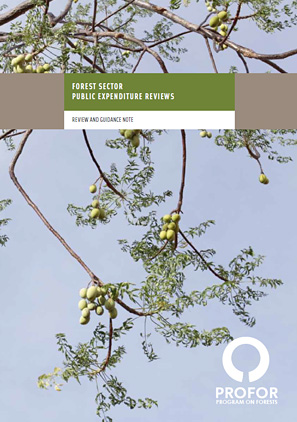You are here

Share
Attachments
Forest-Sector-PER-review-PROFOR.pdf
Download
Forest Sector Public Expenditure Reviews: Review and Guidance Note
Benchmarking Public Service Delivery at the Forest Fringes in Jharkand (India)
Reforming Forest Fiscal Systems
Authors/Partners
Martin Fowler with Patrick Abbot, Stephen Akroyd, John Channon, Samantha Dodd (Oxford Policy Management and LTS International).
Forest Sector Public Expenditure Reviews (Toolkit)
Evaluating the effectiveness of public spending in the forestry sector: lessons from global good practices
CHALLENGE
Public expenditures in the forest sector arise from the need to maximize development outcomes and enhance livelihoods, conserve a variety of local and global public goods, set an attractive investment climate to leverage private investment, and contribute to the costs of forest administration. Yet the sector is typically poorly funded in most developing countries.
Lack of adequately qualified staff, lack of funds to carry out essential supervisory operations and lack of equipment are symptoms of ineffective budget planning and allocation. Poorly paid staff have few incentives to execute their duties responsibly and may be tempted to indulge in corrupt and illegal practices. In the end, mismanaged forests compromise development and environmental goals.
APPROACH
Sectoral public expenditure reviews can help diagnose spending problems and help countries develop more effective and transparent budget allocations that promote growth and reduce poverty.
To ensure that sectoral reviews are based on effective tools (tracking surveys, citizen report cards, etc) and translate into successful policy and spending reforms, PROFOR commissioned a stock-taking of public expenditure reviews in the forests sector. The authors examined global best practice examples from other sectors and made recommendations based on this analysis.
The guidance note covers the issues to be considered during the preparation phase of a forests sector PER, and in drawing up the Terms of Reference (an example ToR is provided), the analysis that should be contained within the report, and a proposed structure for the report.
FINDINGS
The review finds that, globally, very few forest sector PERs have been undertaken to date. Of the 61 PERs reviewed, only 14 focused to any degree on forestry. Of these, 11 were part of an FAO programme of sustainable forest development, where the principal focus was on aspects of forest revenue, with only limited analysis of sector expenditures.
The principal findings of the review of PER literature are as follows:
- The definition of ‘forestry’ and the ‘forest sector’ differs considerably between studies.
- There are considerable inconsistencies between policy priorities and planned budget allocations to the forest sector.
- Data problems were a common feature of the PERs.
- In almost all of the cases reviewed, only a small proportion of the national budget is allocated to the forest sector.
- Many of the PERs reveal low disbursement rates against approved budgets.
- The importance of NGO expenditure and involvement in the forests sector is understated.
- Capital investments are undertaken without consideration of the associated recurrent spending requirements to adequately maintain these investments.
- Operations and maintenance (O&M) funding in forestry departments is inadequate.
- Few attempts have been made in the PERs reviewed to link public sector expenditure to outcomes.
- There is limited analysis of the efficiency and effectiveness of forestry expenditures.
RESULTS
PROFOR and Oxford Policy Management hosted a half-day workshop on December 14, 2010, in Washington DC. The objective of the workshop was to present the initial findings from the Forest PER survey, to discuss some of the best practices which have emerged from this review, and to seek wider feedback about the utility of the draft guidance note, and how it can be made more useful to sectoral practitioners. The review and guidance note were finalized in January 2011 and published formally in July 2011.
In a second phase, individual countries will customise the guidelines to meet their specific requirements and experiences with piloting the guidelines will be used to revise the guidance note.
For stories and updates on related activities, follow us on twitter and facebook, or subscribe to our mailing list for regular updates.
Author :
Martin Fowler with Patrick Abbot, Stephen Akroyd, John Channon, Samantha Dodd
(Oxford Policy Management and LTS International).
Last Updated : 02-07-2017








